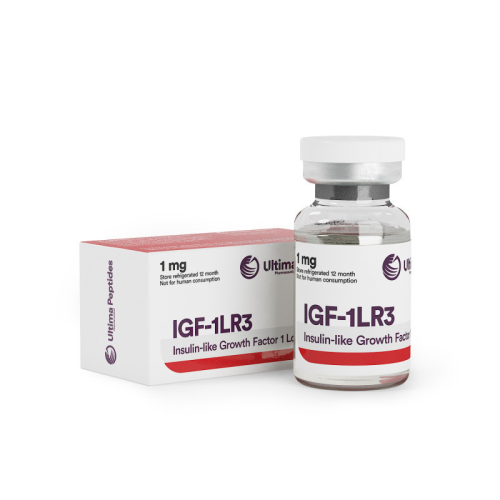Ultima-IGF-1 LR3 1mg
- Brand: Ultima Pharmaceuticals - US
- Product Code: Ultima-IGF-1 LR3 1mg
- Availability: In Stock
-
$110.00
CLASSIFICATION
Peptide Hormone
ACNE
No
WATER RETENTION
No
HBR
No
HEPATOTOXICITY
No
AROMATIZATION
No
MANUFACTURER
Ultima Pharmaceuticals - US
WAREHOUSE
USA Warehouse 5
SUBSTANCE
IGF-1 LR3
,
Products are shipped without brand labels for safety purposes.
Insulin-like Growth Factor 1 (IGF-1), also referred to as Somatomedin C, is a hormone similar in structure to insulin. It plays a critical role in growth during childhood and has anabolic effects in adults.
IGF-1 is one of several growth factors essential for normal human development. It is primarily produced in the liver, but is also synthesized in various other tissues throughout the body.
The structure of IGF-1 comprises 70 amino acids and, like insulin, it features an A and B chain linked by disulphide bonds, along with a C peptide region that includes 12 amino acids.
UsageInsulin-like Growth Factor 1 (IGF-1) supports healthy bone and tissue growth and has the ability to lower blood sugar levels. IGF-1 is known to target fat cells, facilitating fat metabolism, which in turn boosts lean body mass and reduces fat. These effects are particularly sought after by athletes and bodybuilders. Elevated IGF-1 levels are associated with weight gain, which is primarily due to the increase in lean body mass rather than fat accumulation.
IGF-1 is popular in the bodybuilding community and among regular exercisers. It aids in faster recovery after workouts and enhances energy during exercise.
IGF-1 injections are commonly prescribed for both adults and children with a growth hormone deficiency. The hormone contains vital amino acids that can assist children who are experiencing slower than average growth and can supplement adults who lack sufficient levels.
Research indicates that the anabolic properties of IGF-1 may be attributed to reduced protein breakdown and heightened protein synthesis in skeletal muscle. This effect might result from IGF-1’s direct influence on muscle tissue, helping to heal skin burns and other tissue abnormalities.
Mechanism of ActionIGF-1 naturally occurs in human blood and mainly functions to regulate the effects of growth hormone within the body. The normal activities of IGF-1 and growth hormone include fostering tissue and bone growth. IGF-1 is produced in various tissues in response to growth hormone circulating in the blood.
IGF-1 facilitates overall body growth and has a stimulatory effect on nearly every cell type, particularly those in bone, cartilage, skeletal muscle, liver, kidney, nerve, skin, and lung tissue. Beyond its insulin-like effects, IGF-1 also modulates cellular DNA synthesis.
AdministrationIGF-1 is usually administered through subcutaneous injections in a fleshy part of the body, such as the stomach or abdominal region. It can also be given intramuscularly.
Mode of Administration:Before giving IGF-1, it is important to use a sterile and clean syringe.
For promoting lean muscle growth and fat loss
Dosage Amount:IGF-1 should not be injected more than twice per day.
A typical IGF-1 dosage cycle lasts between 2 to 12 weeks.
Children and adults prescribed IGF-1 for growth deficiencies should consult with a healthcare provider for appropriate dosing.
Side EffectsThe potential side effects of IGF-1 can be similar to those associated with other growth hormones. These may include abnormal growth of body tissue (acromegaly), damage to joints, liver, and heart. Users may experience joint and muscle pain, headaches, and nausea. IGF-1 can also lead to lower blood glucose levels, possibly causing hypoglycemia. Researchers have linked IGF-1 to an increased risk of certain cancers, including lung, breast, colorectal, and prostate cancers.
Benefits
